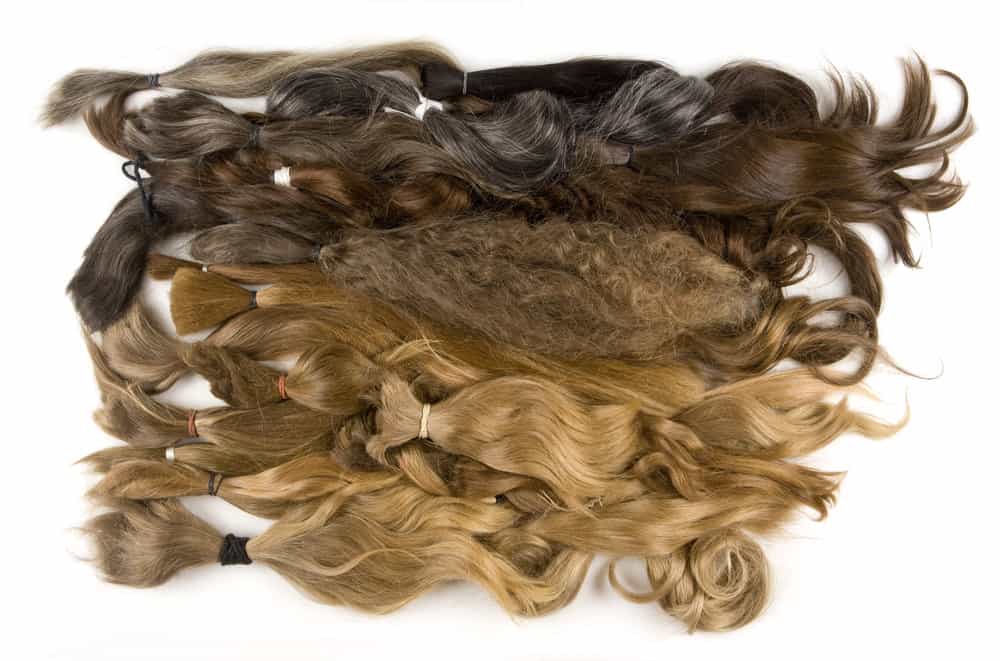
Whether you plan on visiting a salon or are online shopping for
So, what is virgin hair? We've got you covered if you’re wondering what it is and why it's so popular! In this article, we’ll walk you through everything you could possibly need to know about virgin hair vs. other hair types.
We’ll also spend some time breaking down how virgin hair compares to other popular hair types, so make sure you read all the way down to the end!
Table of Contents
What Is Virgin Hair?
Whether you’re talking about natural hair or extensions, virgin hair has the same definition. Virgin hair is unprocessed. At the time of collection, it hasn’t been chemically straightened, bleached, colored, texturized, or permed.
The hair’s outermost layer, called the cuticle, is completely intact and smooth. As a result, it's much shinier and easier to manage.

In order to be classified as virgin human hair, the hair has to meet rigorous testing standards. Keep in mind that you can occasionally find dyed virgin hair.
It simply means that the manufacturer dyed the hair after it was collected rather than before. That also means that the hair was dyed when it was unprocessed and at its healthiest.
What Is the Difference Between Virgin Hair and Raw Hair?
If you’re researching different types of
Raw hair is a type of virgin hair, but not all virgin hair is raw.
Like virgin hair, raw hair is 100% unprocessed. It hasn’t been chemically treated or altered and is much more resilient than processed hair.
But unlike virgin hair, raw hair has never had heat applied to it. Raw hair is collected from just one donor and looks and smells much more natural than virgin hair.
While raw hair comes in its natural state, virgin hair has usually undergone steam or heat processing. That helps give it a consistent texture and ensures the hair looks silky and lustrous.

Which Is Better: Raw Hair or Virgin Hair?
Now that you’re familiar with the differences between raw and virgin hair, you’re probably wondering which is better. The truth is, it ultimately comes down to your personal preferences.
Raw hair is considered the highest quality of the two and is considerably more durable than virgin hair. It holds up to heat and chemical styling better than virgin hair and is much longer lasting.
However, there are some cases where virgin hair is the better choice.
Because raw hair is completely unaltered, you’ll have fewer color, texture, and density options when shopping. Additionally, due to the steam processing, virgin hair is usually silkier, shinier, and more consistent than raw hair.
Steam styling helps lock the desired style in place, making the hair less likely to respond to the elements. And because it's coarser than virgin hair, you’ll have to be more diligent with detangling, conditioning, and moisturizing the hair.

What Is So Special About Virgin Hair?
Regardless of the context, virgin hair is almost always used as an indication of quality. Virgin hair is of higher quality and is usually sold at a high price.
If you’re wondering if it's worth the hype, the answer is a resounding yes.
Because virgin hair has no chemical damage, it's much more resilient than other hair types. It also takes color better than previously dyed strands and can take more abuse in the form of heat styling and chemical processing.
How Long Does Virgin Hair Last?
Virgin hair is exceptionally durable. The best way to truly understand how long virgin hair lasts is to compare it to other kinds of extensions. Synthetic
Altered, non-virgin

How Do You Know if Your Hair Is Virgin?
When it comes to determining whether your hair is virgin, your best resource is the seller you bought the hair from. In virtually every case, virgin hair will be advertised as virgin hair, given that it is the most preferred hair extension type and that sellers can charge more for it.
So, in many cases, you can go by the packaging to see if the hair you bought is virgin.
Just know that every once in a while, you may come across a seller that intentionally mislabels hair to deceive customers and increase their profits.
In this case, you’ll want to take a good look at the quality of the hair to make sure. We’ll cover that in the following section.
How Can You Tell Hair Quality?
Are you thinking about buying some human
That way, you can ensure you get your money's worth. Don’t know what to look for? Here are some ways to gauge hair quality.

Run Your Fingers Through the Extensions
When looking at
It should be smooth, tangle-resistant, and separate easily as your fingers make their way down the hair’s length. You also shouldn’t see a lot of shedding. The higher quality the extensions are, the less shedding you’ll notice.
Do a Length Percentage Test
Another sign that your hair is high quality is the number of strands that are the desired length. If you buy 18-inch
However, if you notice a lot of short pieces, the extensions probably aren’t made well.
When the extensions lie flat, it may be hard to see the shorter strands. So, pick the extensions up and twist them. The short pieces will stick straight out, so you’ll have a clear indication of the length percentage.

Perform a Cuticle Check
100% virgin hair should have fully intact cuticles. So, when you run your hands through the hair, it should feel smooth and glossy. If you want to know whether the cuticles are intact, you can use a pair of sharp scissors.
Open the scissors and gently scrape the hair with one of the blades.
When you scrape virgin hair, the cuticles should come off and leave behind a fine, white powder. But if the powder is brown, that means the hair has likely been chemically processed.
Smell Your Extensions
Before purchasing
Even though virgin hair is more expensive than standard hair, it’s well worth the cost.
It looks better, lasts longer, and can withstand much more manipulation. But if you’re after the highest quality hair possible, we recommend sticking with raw hair.
It lasts even longer than regular virgin hair, so your extensions still look brand new for up to five years or longer! Regardless of which hair you decide on, we hope the information we’ve covered in today’s article was helpful.




